The beauty of simplicity in Saint-Paul de Vence
Sublime art, rich culture, and an escape from the pace of modern life, Rebecca McVeigh explores the timeless allure of Saint-Paul de Vence
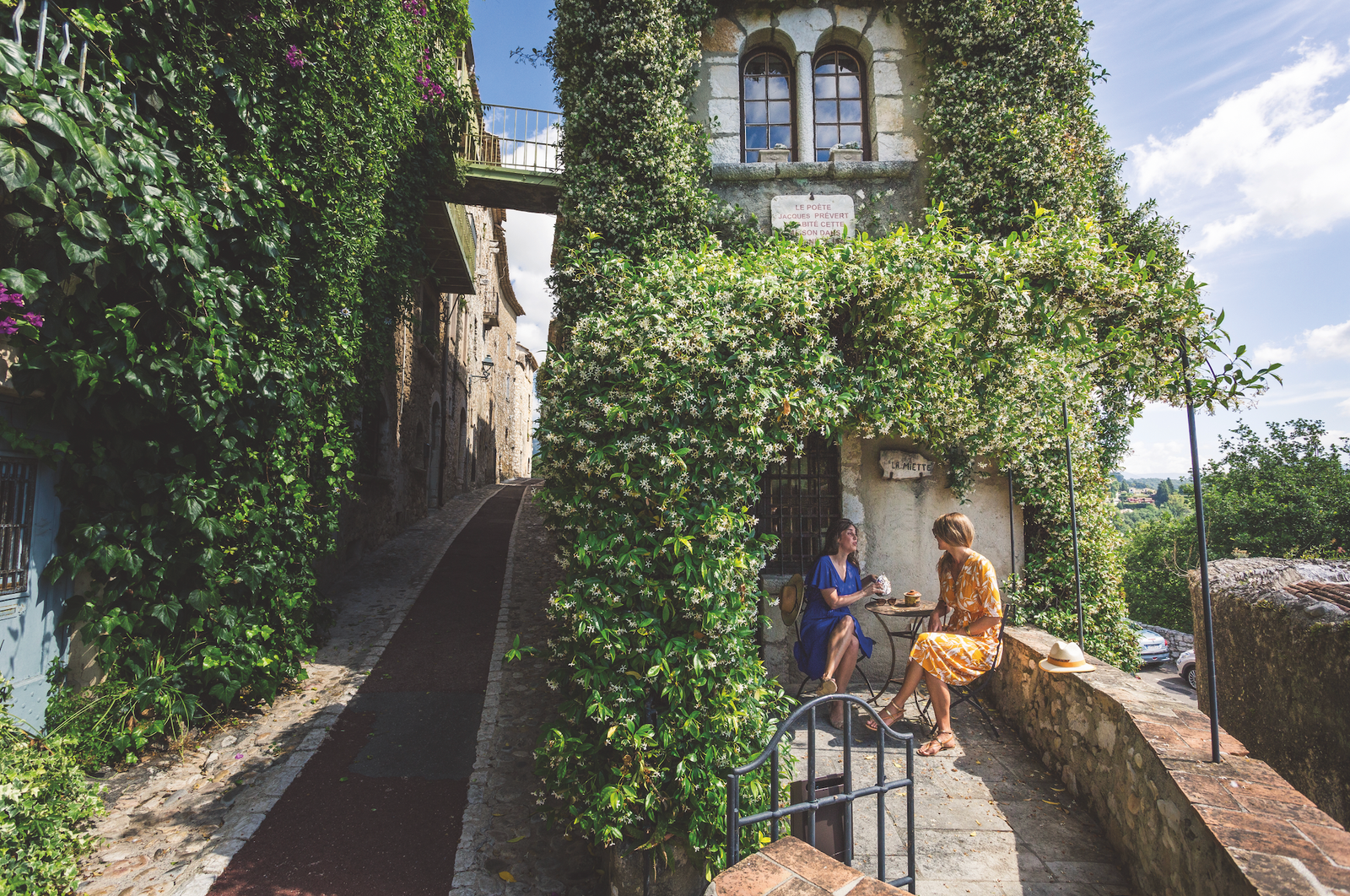
The road to Saint-Paul de Vence winds like a ribbon through Provençal countryside, rising gently from the Côte D’Azur to reveal a hilltop village seemingly untouched by time. Stone ramparts encircle the medieval settlement, cradling its cobbled streets, honeyed facades, and babbling fountains. From the walls, wonder at the geographical variety of the Alpes-Maritimes, where snow-capped mountains give way to olive groves, which tumble down to the glistening Mediterranean. Once a frontier fortress, Saint-Paul has evolved into a sanctuary for artists, a haven for seekers of beauty, and a place where life slows into something savoured.
Saint-Paul de Vence has long attracted those with an eye for the sublime. Here, Marc Chagall spent his final years, creating many works before the town became his final resting place. His grave in the tranquil local cemetery is simple and adorned with pebbles left by visitors, an echo of Jewish tradition and a quiet homage to a man whose visions transcended borders.
But Chagall was hardly alone. The village’s most fabled watering hole, La Colombe d’Or, tells the tale of an era when the currency of talent outweighed francs. An inscription reads: “Ici on loge à cheval, à pied ou en peinture” – “Here we lodge those on horseback, on foot or with paintings”. In the 20th century, artists such as Picasso, Braque, and Léger traded art works for supper and shelter, many still adorn the inn’s walls today, or can be found dotted throughout the property. This rustic inn became the south’s answer to the great Parisian art salons. The tables still hum with stories of bon vivants, artistic debate and exchanges of ideas. Dining here is an immersion into the heartbeat of 20th-century modernism.
Just steps from the famed hotel, locals and visitors gather beneath plane trees to play pétanque, the quintessential Provençal pastime. At Café de la Place, with a pastis or rosé in hand and the late afternoon sun casting golden slants of light, you can watch a game unfold or join in yourself. It’s here the rhythms of village life play out – laughter, clinks of metal balls, a slower pace of life. You can hire a pétanque set from the local tourist office, who also give fascinating guided tours of the village in English or French.
Fondation Maeght: The soul of modern art
No visit to Saint-Paul de Vence is complete without ascending the wooded path to Fondation Maeght. Created in 1964 by art dealer Aimé Maeght and his wife Marguerite in memory of their late son Bernard who tragically died from leukaemia aged 11. The foundation is a deeply personal testament to resilience through beauty, and perhaps the healing nature of art. Its modernist buildings are harmoniously integrated into the natural landscape, creating a dialogue between architecture, art, history and environment.
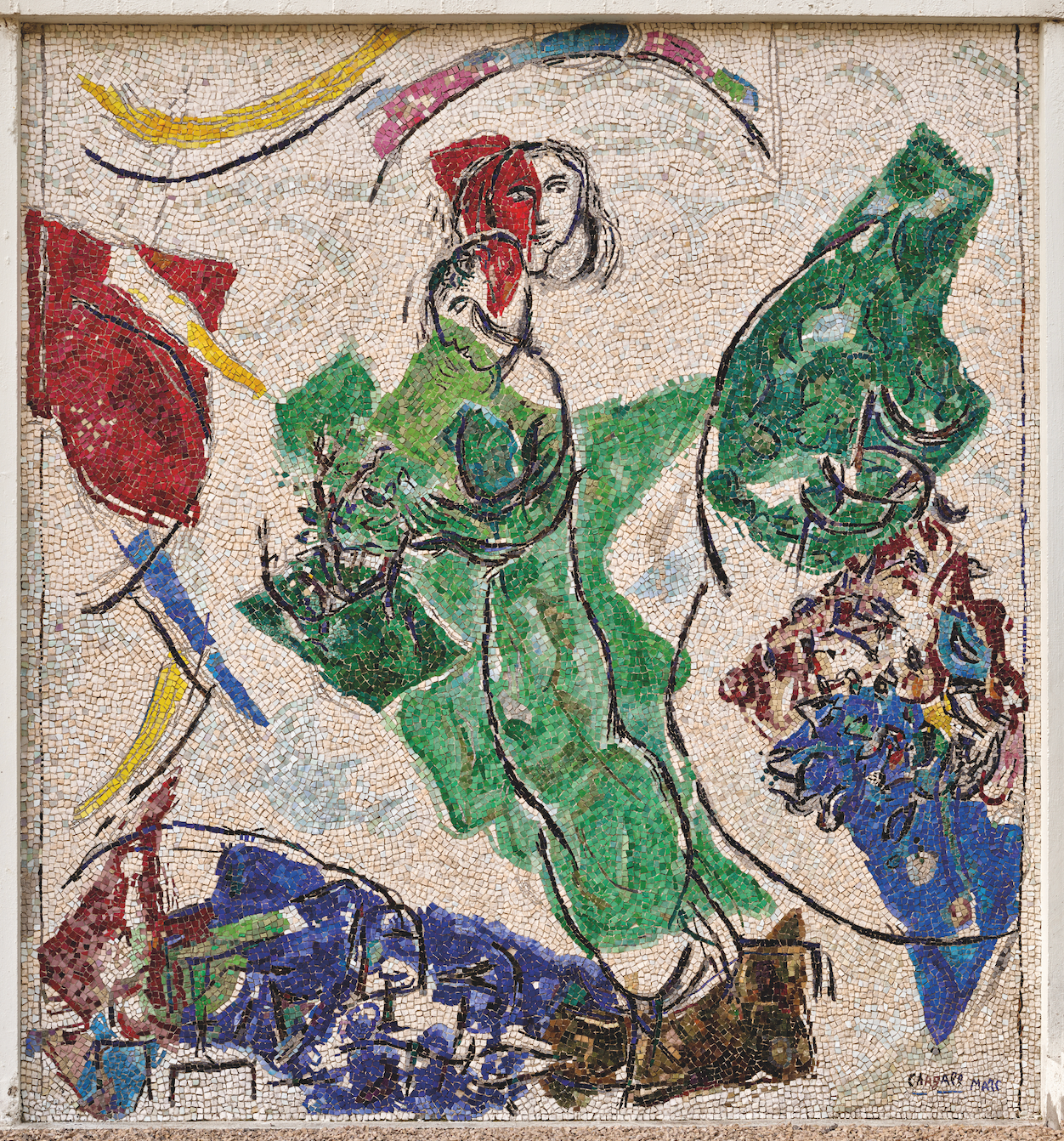
PHOTO: FRANÇOIS FERNANDEZ – © 2025 FONDATION MAEGHT
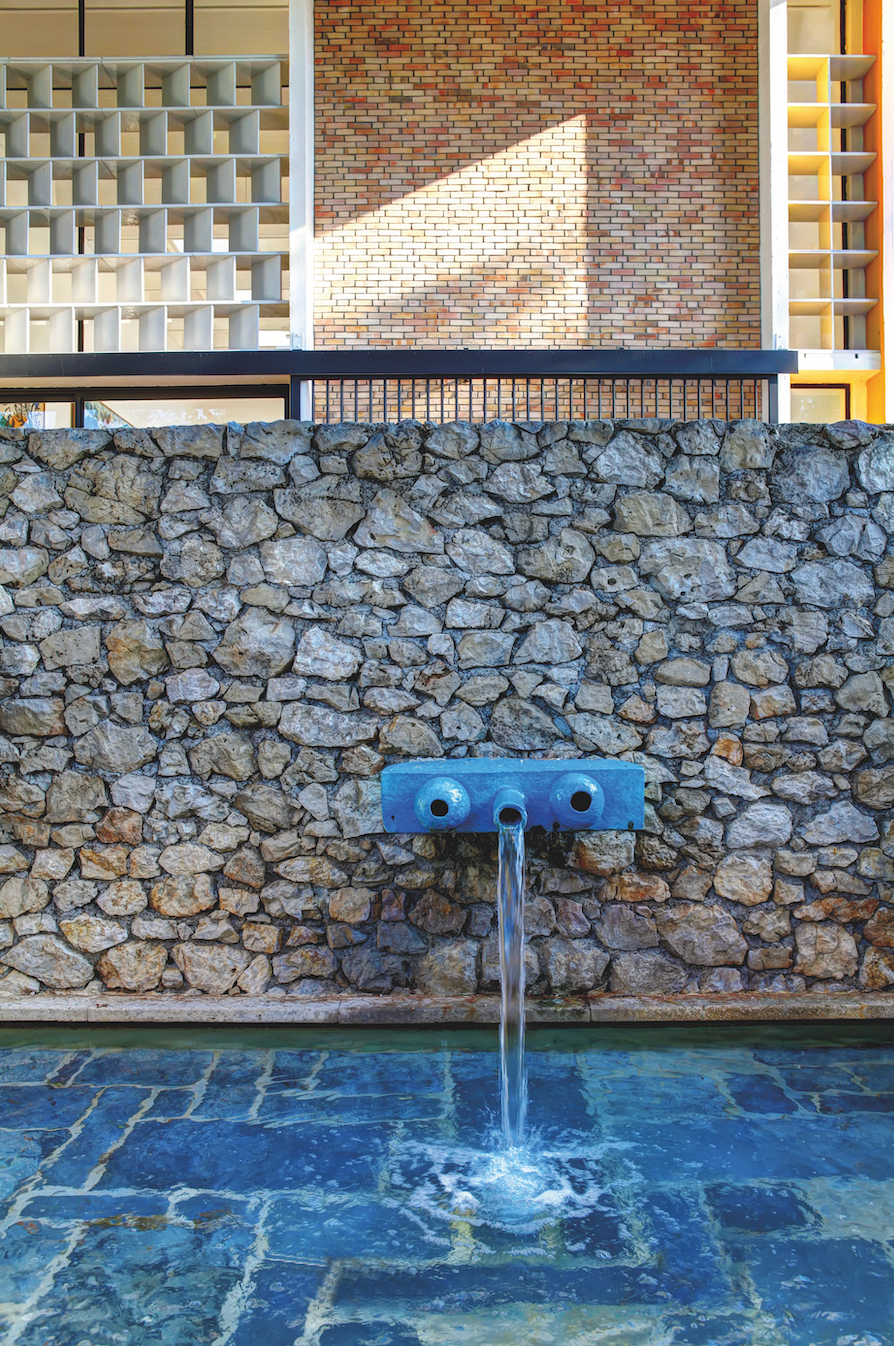
© ARTAZUM / SHUTTERSTOCK.COM
Chagall, who was a friend of the Maeght family, collaborated on his first mosaic Les Amoureux for the external walls of the Foundation. Dedicated to the Maeghts, the piece depicts the couple welcoming visitors to the Foundation, and also Amié held by his wife, a tribute to the steadfast and supporting nature of their love in the face of family tragedy. Elsewhere, Miró’s playful, otherworldly sculptures inhabit the garden, while Barbara Hepworth’s graceful forms invite you to take a peaceful moment of reflection. A gathering of Giacometti’s wiry silhouettes stand in quiet communion on the terrasse. The permanent collection includes over 13,000 works by 20th-century titans: Bonnard, Chagall, Kandinsky, Calder, and many others. As France’s largest private collection of modern and contemporary art, the foundation is more a creative pilgrimage than a museum.
A sanctuary in bloom: Domaine du Mas de Pierre
After the sensory feast of Saint-Paul, it’s time to seek a place to exhale and retreat into something gently luxurious. Just minutes from the village lies Domaine du Mas de Pierre, a five-star Relais & Châteaux resort couched in a Provençal paradise. Nestled in a lush 20-acre estate of olive groves, wisteria and perfumed gardens, this is a place where total relaxation unfolds naturally.
The 76 rooms and suites are housed across nine ‘bastides’ (country villas), each with their own outdoor space; either a private garden or terrace overlooking the Arcadian setting. Here Provençal charm meets contemporary luxe. There is a dedicated adults-only villa with a private pool, while families (and four-legged friends) are equally welcomed and thoughtfully catered to throughout the property.
But the true jewel is the resort’s vast spa – 2,000 square metres dedicated to wellbeing across two floors. Here, the air smells of Volupté, the Domaine’s signature scent created with the famous Tuberose that flourishes in the region. The spacious herb sauna, a cocoon of rejuvenating warmth and fragrance, looks out onto lush greenery. Afterwards the brave can try the Scandinavian style cold water bucket or snow cave. Sensorial showers, serene indoor and outdoor pools, and a garden jacuzzi surrounded by verdant nature complete the resort’s restorative offerings. Every space is thoughtfully crafted to rejuvenate the body and mind. For a truly indulgent experience, the signature full-body massage delivers blissful relaxation that lingers long after you leave the treatment room.
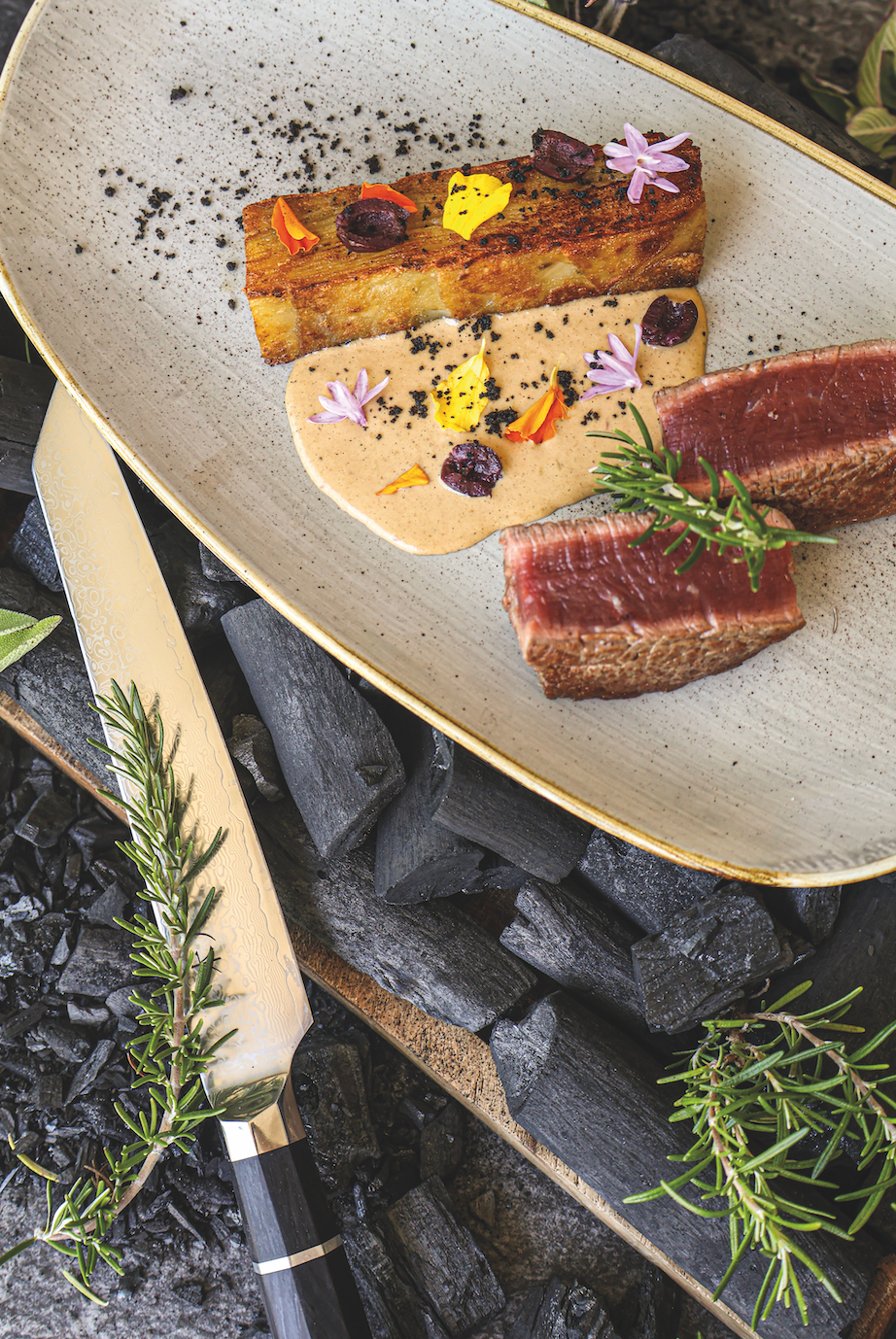
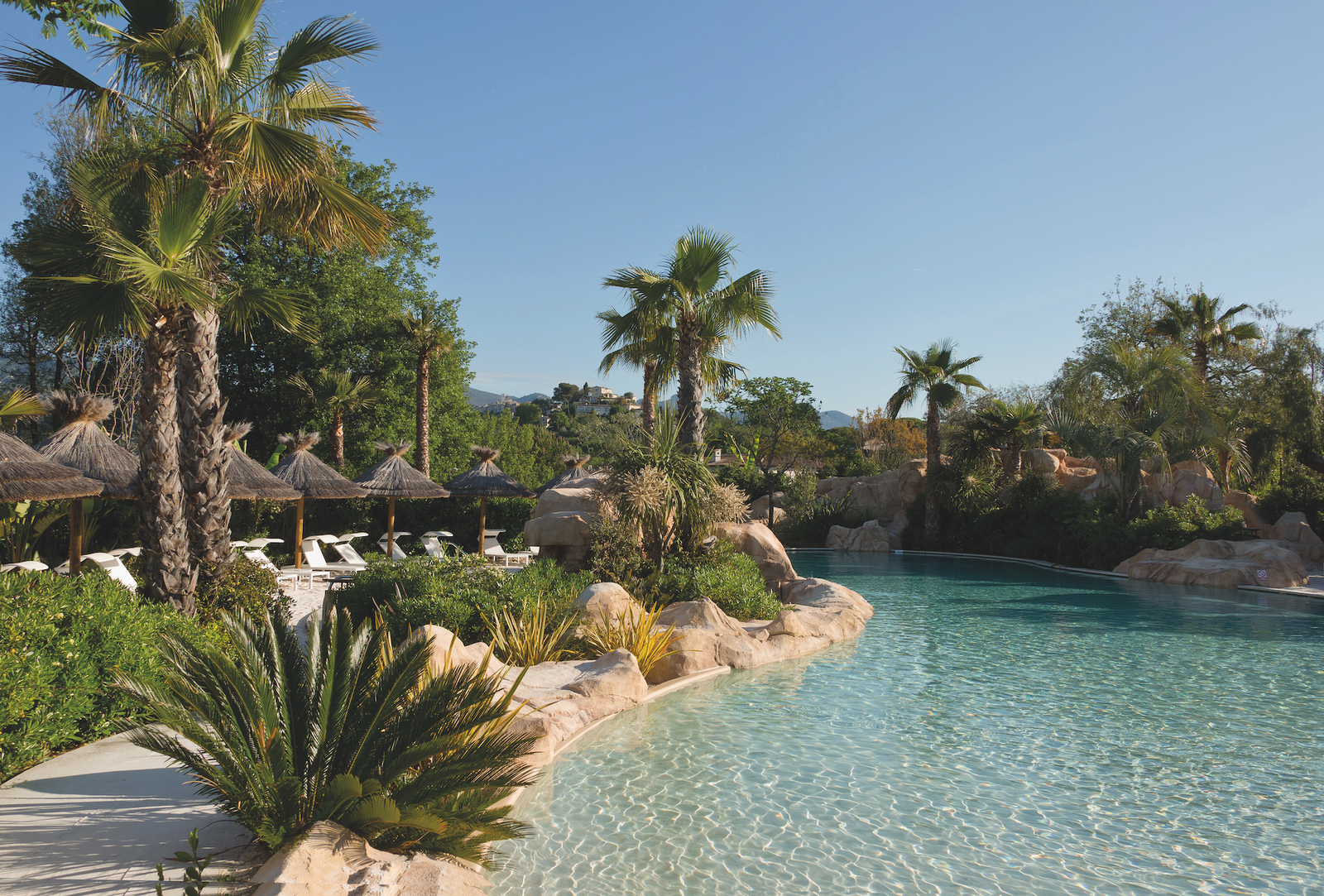
Dining at Le Mas de Pierre has something to suit all palettes. The main restaurant, La Table de Pierre, overseen by Executive Chef Rodolphe Loury presents Provençal gastronomy elevated to fine art. Ingredients are locally sourced, allowing dishes to reflect the seasons and surrounding terroir. The more casual Dolce Provenza delivers Southern flavours and Italian inspired dishes with a vibrant, convivial flair.
And for families? Themed around Alice in Wonderland, a varied kids’ club programme runs every day of the French school holidays. Housed in the charming wooden ‘roulottes’ (traditional wheeled wagons), activities range from creative workshops and cooking lessons to archery and gardening. While children paint and play, parents can surrender to the quietude of the spa, a joy. There is a playpark open year round and the sand bottomed Beach Lagoon, is perfect for young guests to swim, slide and discover the hidden cove in warmer months. The soft sand invites endless sandcastle building, a welcome contrast to the stony shores that define much of the Côte d’Azur.
So close to Saint-Paul de Vence, it’s only natural that Domaine du Mas de Pierre reflects an artistic spirit of its own. Scattered throughout the gardens are sculptures including Théo Tobiasse’s hymn to love Venus, striking work by friend of Matisse, Sacha Sosno, and bronze sculptures by Jean-Michel Folon. French artist David David adds a playful note with his figures topped with signature upturned buckets bringing a hint of surrealism to this Provençal sanctuary.
Time spent in Saint-Paul de Vence is always a lesson in living artfully. In its cobbled streets and idyllic surrounds there’s a rare equilibrium: between past and present, creation and contemplation. You are reminded that beauty really does live in simplicity, in stillness, and in places like this.
ABOUT THE AUTHOR

Rebecca McVeigh is a French Riviera-based travel writer and producer. She’s worked for the BBC, ‘The Sunday Times’, ‘France Today’, ‘Fodor’s’ and more.
